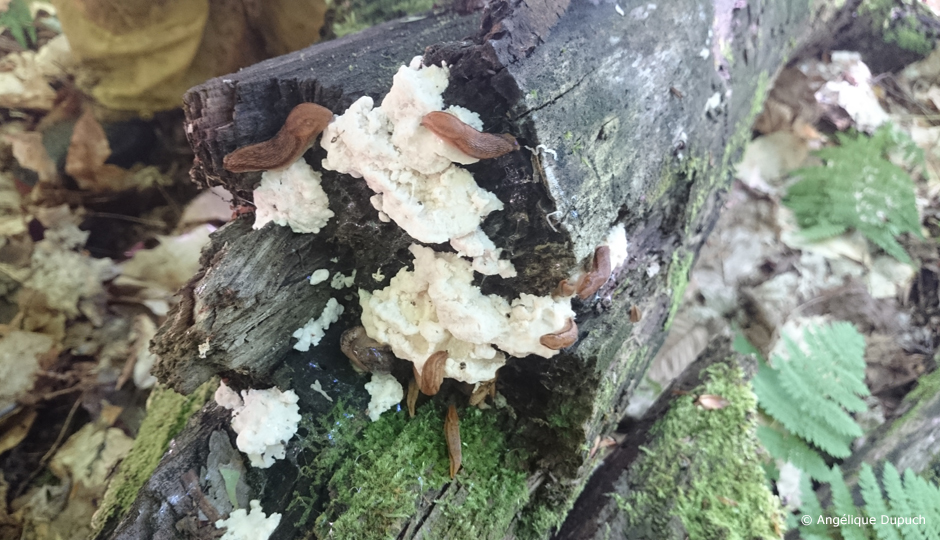Various studies have shown that one in ten introduced species will become invasive, leading to significant ecological, economic and environmental damage, including a loss of global biodiversity. How and why does this happen? The lowly slug could provide us with some answers. In fact, of the forty-odd slug species in Canada, half were accidentally introduced into the country, often when transporting goods from abroad. Slugs are therefore an interesting model to study to better understand biological invasion.
Arion fuscus is more abundant in disturbed forests, which implies that disruptions appear to facilitate its proliferation.
Angélique Dupuch, a researcher at Université du Québec en Outaouais, and Anna Mazaleyrat, her PhD student, chose to study the slug Arion fuscus, an introduced species which, in just a few decades, has become extremely abundant in Québec’s forest ecosystems. Together with their collaborators, the researchers carried out an inventory of slugs living in the boreal and hardwood forests of Ontario and Québec, in logged and undisturbed habitats, to measure the abundance of Arion fuscus and native species. Their finding showed that Arion fuscus is more abundant in disturbed forests, which implies that disruptions appear to facilitate its proliferation. Angélique Dupuch hypothesized that Arion fuscus has a greater capacity for adaptation than local slug species. Taking advantage of the new conditions created by logging, Arion fuscus become larger, allowing them to lay more eggs and increase their population. The researchers also suggest that as the number of Arion fuscus increases, so will competition with native species, which will then lose ground.
Research continues in the laboratory to study the competition between Arion fuscus and a native species, and to compare their displacement behaviours at different temperatures and humidity levels. In addition to providing a better understanding of slugs, this work may lead to possible solutions to the problem of biological invasion.




